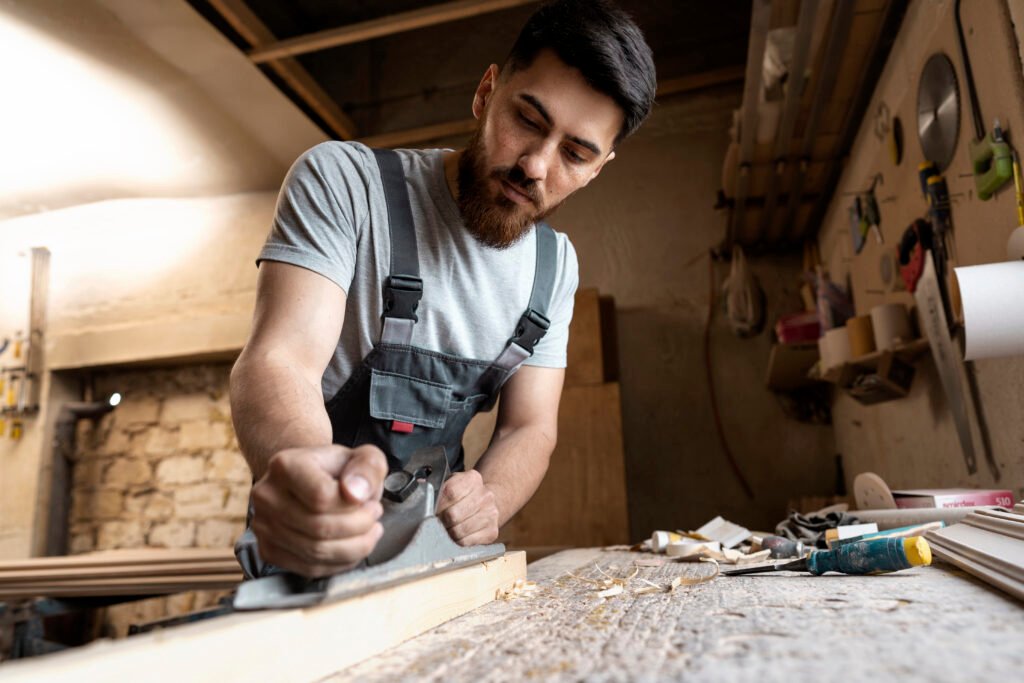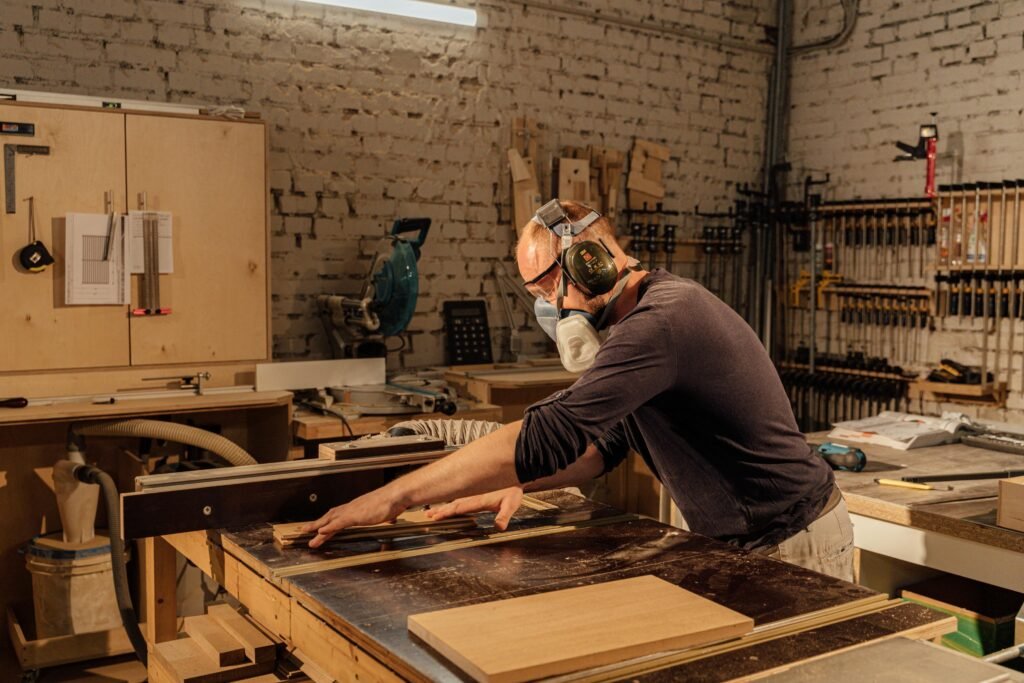Are you looking for a unique, budget-friendly, and eco-conscious way to add a focal point to your living room? In the world of DIY furniture, few projects are as popular, versatile, and rewarding as building a pallet coffee table. Using reclaimed wooden pallets is a fantastic way to create stylish, functional pieces for your home without spending a fortune, and it’s surprisingly accessible for beginners!
A pallet coffee table can fit into various decor styles, from rustic and industrial to modern and bohemian, simply by changing the design and finish. It’s a perfect project that combines creativity, economy, and sustainability, turning discarded materials into cherished furniture.
If you’ve been searching for a hands-on project that’s practical and relatively simple, learning how to make a pallet coffee table might be your next weekend adventure. Let’s explore why this is such a great idea and how you can get started!
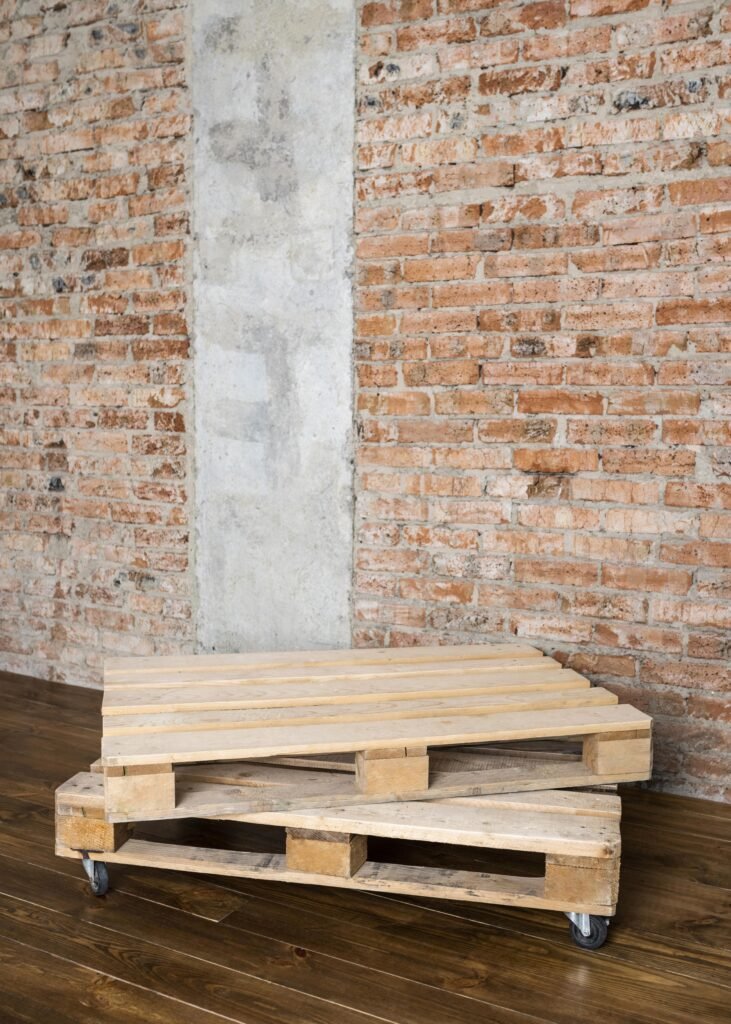
Why Build a Pallet Coffee Table? The Benefits
So, why choose a pallet coffee table over buying a new one? There are several compelling reasons that resonate with the values of a modern homeowner interested in DIY, sustainability, and savvy spending.
- Cost-Effective: Pallets are often free! This dramatically reduces the cost of building furniture. Your main expenses will be fasteners, sandpaper, finish, and maybe some optional hardware like casters or legs.
- Sustainable & Eco-Friendly: You’re diverting wood from the waste stream and giving it a new life. Upcycling pallets is a fantastic way to practice sustainable living right in your home.
- Beginner-Friendly: Many pallet coffee table designs are relatively simple, involving basic cuts, joining pieces with screws, and sanding. They are great beginner carpentry projects that build confidence.
- Unique and Customizable: No two pallets are exactly alike, giving your table unique character. You have complete control over the size, height, design features (like storage), and finish, allowing you to create a piece that perfectly matches your style and needs.
- Trendy Aesthetic: Pallet furniture has a popular, often rustic, industrial, or shabby-chic look that can add warmth and character to a space.
Building a pallet coffee table is a project that feels good for your wallet and the planet, while resulting in a functional piece of art for your living room.
Finding and Preparing Your Pallets: Safety First!
Before you get building, you need pallets! But not just any pallet will do. Safety and proper preparation are crucial when working with reclaimed wood.
Choosing the Right Pallets
Not all pallets are created equal, especially regarding safety.
- Look for the “HT” Stamp: Pallets stamped with “HT” signify they have been Heat Treated, a process that kills insects without using harmful chemicals. These are generally considered safe for use indoors.
- Avoid “MB” Stamp: Pallets marked with “MB” were treated with Methyl Bromide, a toxic pesticide. Do NOT use these pallets for indoor furniture.
- Check Condition: Avoid pallets that are visibly stained (especially with chemicals or oil), severely cracked, moldy, or have a strong, unpleasant odor. Look for relatively clean, sturdy pallets.
- Source Responsibly: Ask local businesses (like small hardware stores, garden centers, or manufacturing companies) if they have pallets they’re getting rid of. Often, they’re happy for you to take them off their hands. Avoid pallets from unknown sources or those that carried food/chemicals.
Aim for 1-3 sturdy, clean HT-stamped pallets, depending on the design you have in mind for your pallet coffee table.
Cleaning and Disassembling Pallets
This is the necessary prep work before you start building.
- Initial Cleaning: Use a stiff brush and soapy water to clean off any dirt, cobwebs, or debris. You might even use a power washer if you have one. Let the pallets dry completely.
- Inspection: Once clean, inspect closely for any nails, staples, or screws sticking out. Hammer them flat or remove them. Check for splinters or loose boards.
- Disassembly (if needed): Many pallet coffee table designs require taking the pallet apart to rearrange the boards. This is the hardest part! Use a pry bar, hammer, and potentially a saw (like a reciprocating saw with a metal-cutting blade for nails) to carefully separate the boards. Try to minimize splitting the wood. You can also look for tutorials specifically on disassembling pallets efficiently.
This preparation ensures you’re working with safe, clean wood ready for transformation into your pallet coffee table.
Designing Your Pallet Coffee Table: Ideas and Variations
This is where you get creative! A pallet coffee table can be much more than just a stack of pallets. Consider these popular design options:
Simple Stacked Pallets
- The Easiest Method: Stack two or three pallets on top of each other. Secure them together with long screws. Done! This gives you height and often built-in gaps for storage or display.
- Variations: You can add a simple top layer of plywood or glass for a smooth surface.
Adding Legs or Casters
- Increased Height & Mobility: Attach sturdy legs (wooden furniture legs or metal hairpin legs) to the bottom of a single or stacked pallet. Adding locking caster wheels is incredibly popular for a pallet coffee table, making it easy to move for cleaning or rearranging.
Creating a Smooth Top
- Practical Surface: If you don’t like the gaps between pallet boards, add a solid top.
- Plywood Insert: Cut a piece of plywood to fit snugly into the recessed area of the top pallet layer. Finish it separately or along with the pallet.
- Glass Top: Have a piece of tempered glass cut to size to sit on top of the pallet, providing a perfectly smooth and easy-to-clean surface while still showing the pallet structure underneath.
Adding Storage
- Built-in Shelf: Designs using one or two pallets often naturally create a shelf underneath for books, magazines, or baskets.
- Drawers/Compartments: For a more complex build, you can create custom boxes or drawers to fit into the pallet gaps.
Different Sizes and Shapes
- Standard: Use standard pallet sizes for a rectangular or square table.
- Custom: Disassemble pallets and rearrange boards to create longer, narrower, or differently shaped tables.
Finishing Options
- Raw/Natural: Cleaned and sanded wood with a clear protective coat (like polyurethane) for a truly rustic feel.
- Stain: Apply wood stain to change the color while letting the wood grain show through.
- Paint: Paint the pallet any color to match your decor, from solid colors to distressed or whitewashed looks.
Think about the aesthetic you want and how you plan to use your pallet coffee table when deciding on the design.
Basic Steps to Building Your Pallet Coffee Table
While detailed plans vary by design, the general process for building a pallet coffee table follows these basic steps:
Planning and Cutting
- Decide on your design and dimensions.
- Determine how many pallets you need and if you need to disassemble any.
- Measure and mark any boards you need to cut or trim down using a saw and square.
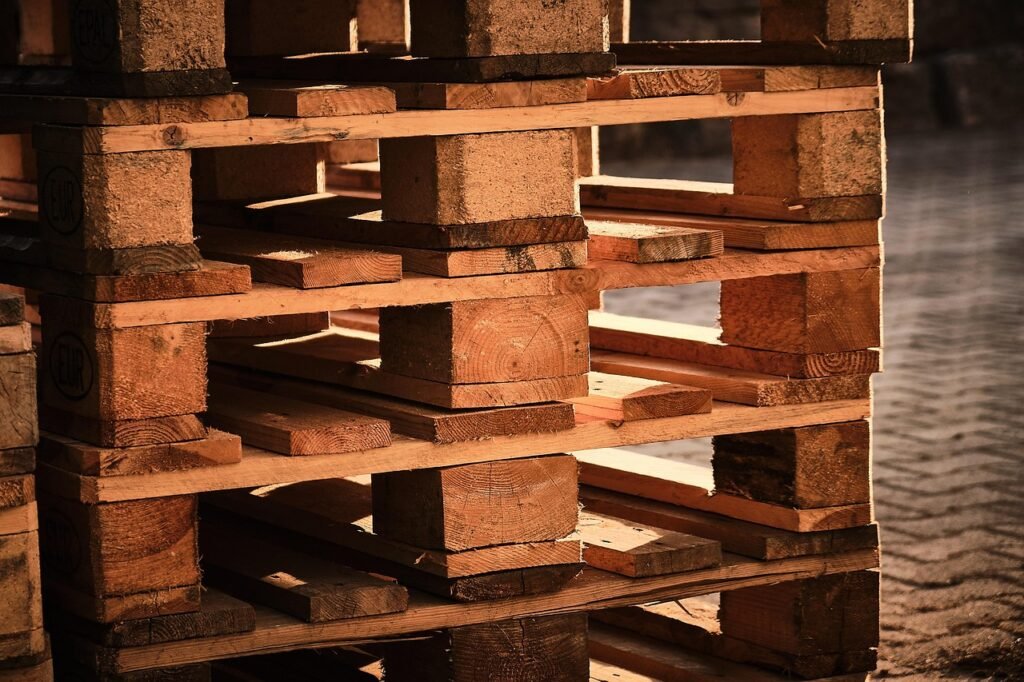
Assembly
- Arrange your pallet pieces according to your design (stacking, using disassembled boards for a top, etc.).
- Secure the pieces together using wood glue and screws (screws are generally stronger than nails for this type of construction). Use a drill to make pilot holes to prevent wood splitting.
Sanding
- This step is crucial for a smooth, splinter-free pallet coffee table. Start with a coarser grit sandpaper (like 80 or 120) to smooth rough areas and edges.
- Gradually move to finer grits (150 or 220) for a smoother finish. A power sander (like an orbital sander) makes this much faster.
Finishing
- Wipe down the sanded wood to remove all dust.
- Apply your chosen finish (stain, paint, or clear coat) following product instructions. You’ll likely need multiple coats, with light sanding between coats for a smooth result, especially with paint or poly.
Adding Hardware
- Once the finish is completely dry, attach any legs, casters, or other hardware according to your design using appropriate screws.
Congratulations, you’ve built your own pallet coffee table!
Tools and Materials Needed
To recap and clarify, here’s a list of tools and materials you’ll likely need for your pallet coffee table project:
- Tools:
- Safety Glasses (essential!)
- Work Gloves
- Tape Measure
- Pencil & Square
- Saw (Hand saw, circular saw, or reciprocating saw for disassembly)
- Drill/Driver (Cordless drill is highly recommended)
- Drill bit set & Screwdriver bit set
- Sander (Orbital sander or sanding block with sandpaper)
- Pry Bar & Hammer (for disassembly)
- Clamps (helpful for assembly)
- Materials:
- HT-stamped Wooden Pallets (Quantity depends on design, often 1-3)
- Wood Screws (various sizes, exterior grade if using outdoors)
- Wood Glue (waterproof if using outdoors)
- Sandpaper (various grits)
- Wood Filler (optional, for filling large gaps or holes)
- Chosen Finish (Wood Stain, Paint, or Clear Polyurethane/Sealer)
- Optional: Casters (with locking brakes), furniture legs, glass or plywood for top.
Many of these tools overlap with general basic tools for carpentry, making this a great project once you have the fundamentals!
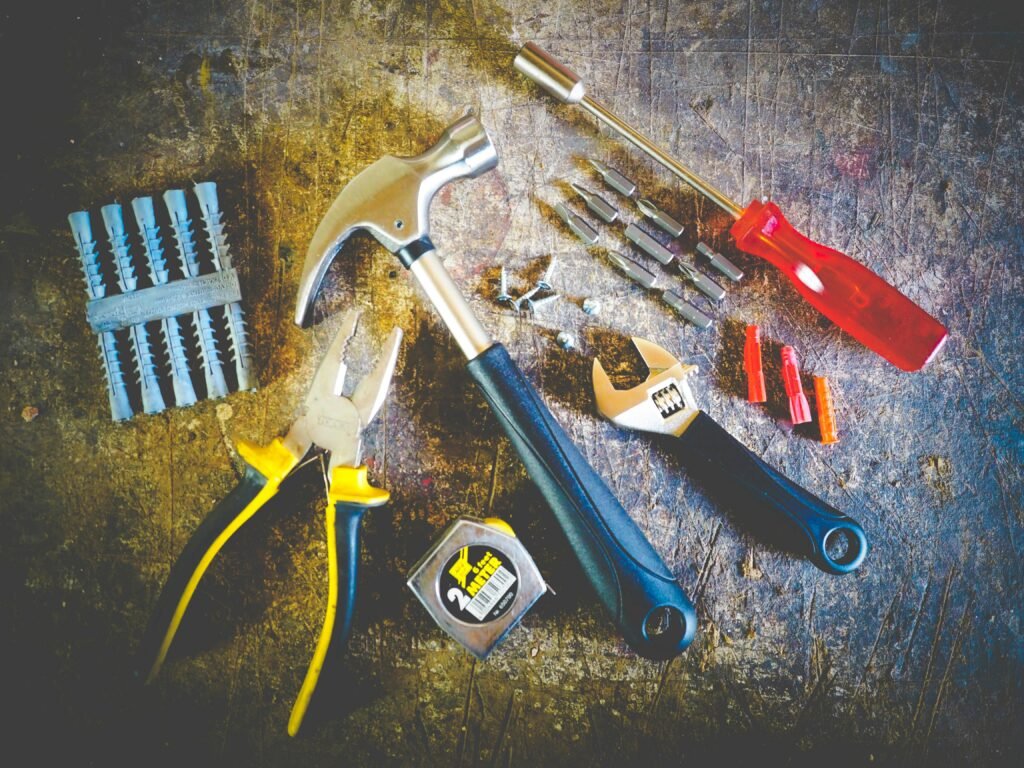
Tips for Success with Your Pallet Coffee Table Project
- Inspect Pallets Thoroughly: Don’t skip the safety check for stamps and cleanliness.
- Invest in a Good Blade: If using a power saw for disassembly, a blade designed for cutting through nails makes the job much easier.
- Sanding is Key: Spend adequate time sanding to avoid splinters and get a smooth finish.
- Pre-Drill Holes: Always drill pilot holes before driving screws near the ends of boards to prevent splitting, especially with dry pallet wood.
- Use Wood Glue AND Screws/Nails: Glue provides strength to the joint; fasteners hold it while the glue dries and add structural support.
- Consider the Weight: Pallet furniture can be heavy! If you plan to move it often, casters are a must.
- Protect the Finish: Ensure your finish is appropriate for the intended use (e.g., water-resistant for coffee spills, UV-resistant if used outdoors).
Caring for Your Pallet Coffee Table
Once your beautiful pallet coffee table is built, a little care will keep it looking great.
- Clean Regularly: Wipe away dust and spills promptly with a soft, damp cloth.
- Use Coasters: Protect the surface from drink rings.
- Touch Ups: Periodically inspect the finish and touch up any worn areas as needed.
- Tighten Fasteners: Check screws or bolts occasionally and tighten if they loosen over time.
Conclusion
Building a pallet coffee table is a rewarding and achievable project for beginner DIYers. It’s an excellent way to practice basic carpentry skills while creating a unique, functional piece of furniture that embodies sustainability and personal style. From hunting for the right pallets to customizing the design and applying the final finish, the process is engaging and culminates in a conversation-starting piece for your home.
With a few basic tools, some free or inexpensive pallets, and a bit of patience, you can easily tackle this popular build. A pallet coffee table adds character to your living space, saves you money, and is a project you can proudly say you made yourself.
So, if you’re ready to transform humble pallets into stylish furniture, grab your tools and get building! Your beautiful, handmade pallet coffee table awaits.

